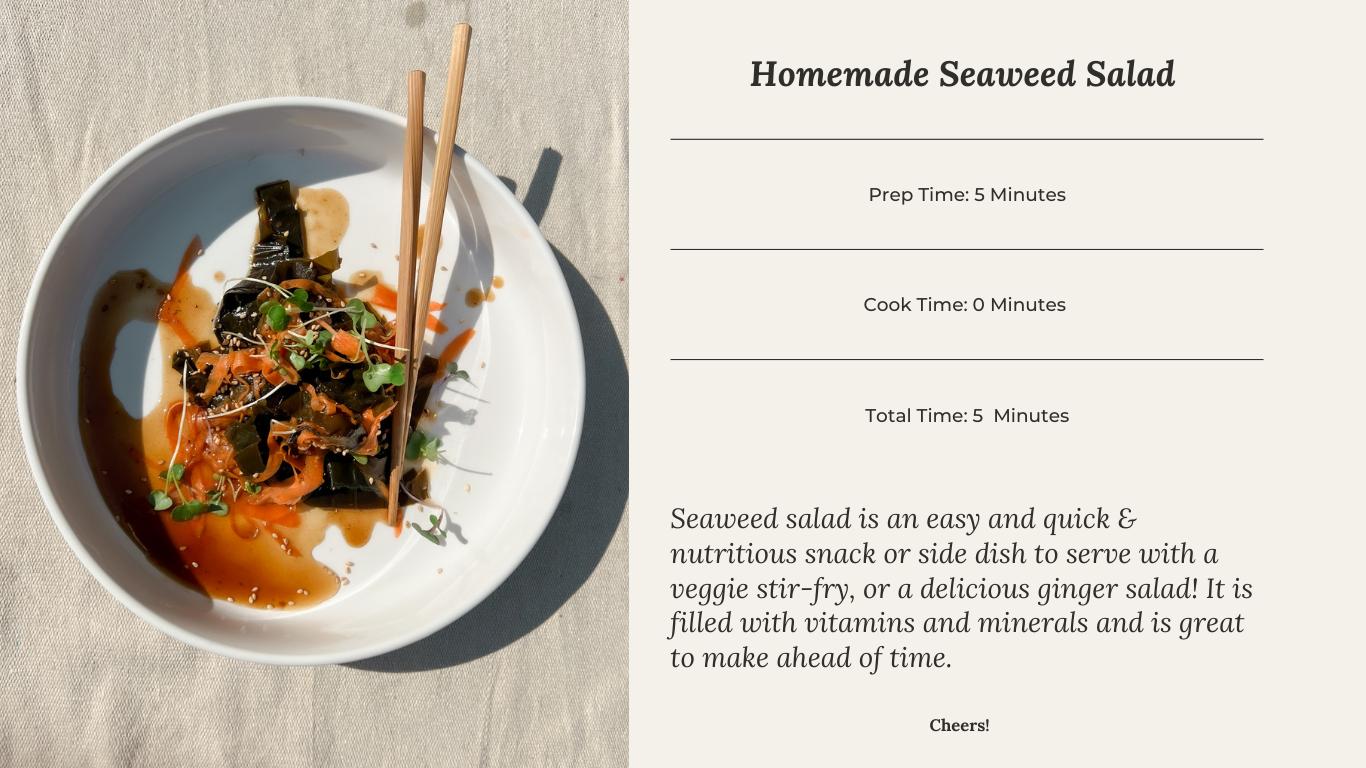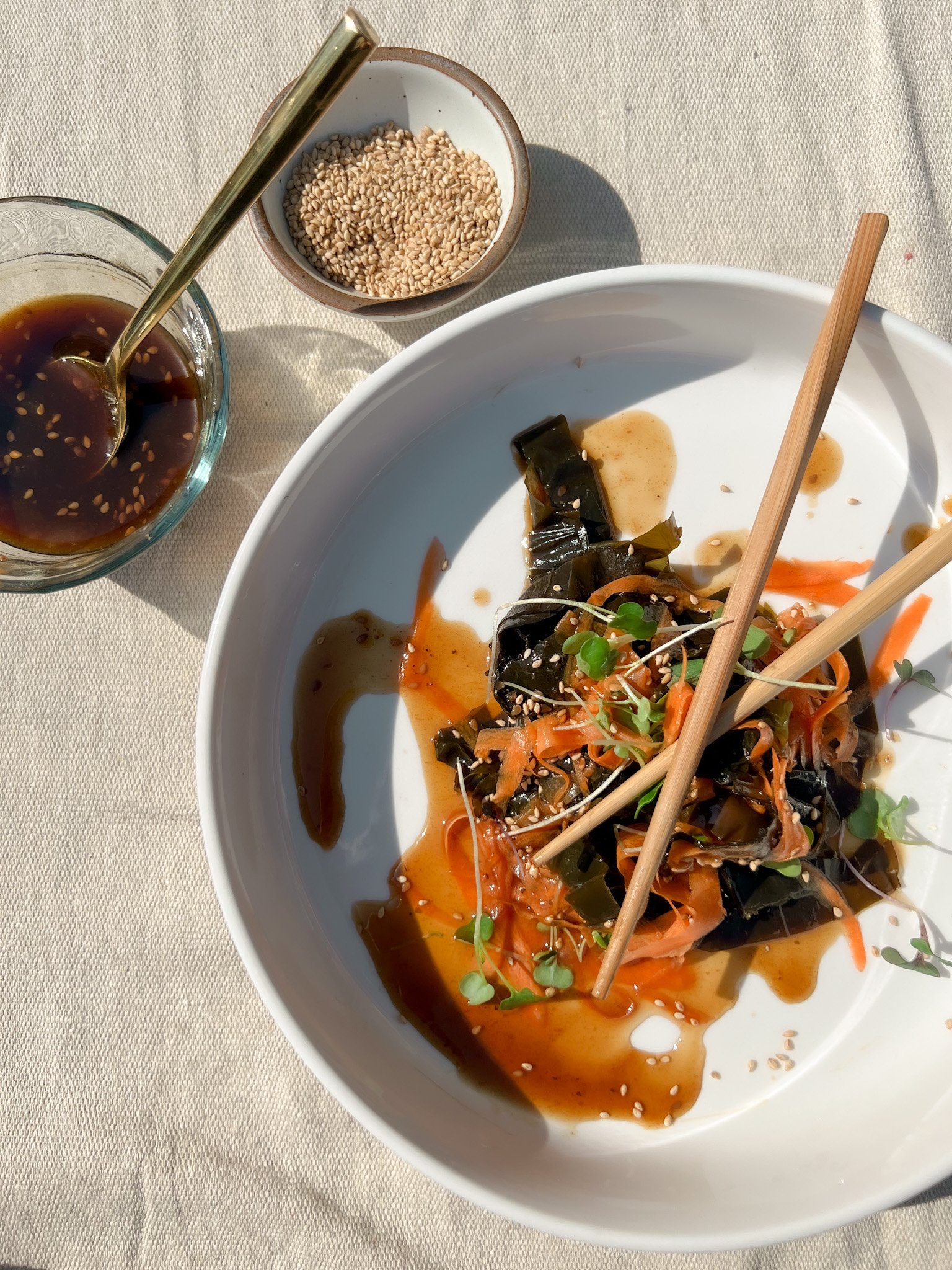Homemade Kombu Seaweed Salad
Seaweed is one of the most nutritious foods on the planet. It is filled with minerals, antioxidants, prebiotics, and chlorophyll. Seaweed has been used for centuries in ancient Chinese medicine. It was often used to cure urinary infections. So Ladies, if your prone to get UTI's often (like I used to) this recipe is for you!!!
Seaweed is a general term that refers to various different marine plants and algae that grow along rocky shorelines around the world. Some of the most common types of edible seaweed include:
Wakame
Dulse
Kombu
Kelp
Sea lettuce
Nori
Arame
Chlorella
Spirulina
Seaweed is a food I eat every single day. Sometimes just in my athletic greens, other days I add spirulina to my smoothies. Seaweed is high in polysaccharides and minerals like iodine and manganese and even contains digestive enzymes that help you properly digest and break down your food. For this recipe, the star of the show is kombu.
Kombu is a member of the kelp family and is incredibly delicious and umami. It is great to take dried kombu and add it to your beans, legumes, or grains when cooking them in order to help you digest the food. It also makes a delicious base for this seaweed salad.
Kombu has so many health benefits, it is a miss not to add this delicious sea plant into your diet! Nutritionally, kombu contains iodine, which is important for thyroid function, iron, calcium, along with trace minerals. Kombu contains vitamins A & C as well. Other minerals in kombu include zinc, copper, manganese, magnesium, iron, and calcium.
The other amazing thing about Kombu and seaweed in general is it is amazing for the planet! There are some new kelp farms popping up around the US, and these farms can make a large difference to the environment. The kelp is able to draw in so much carbon dioxide that they help de-acidify the water, providing an ideal environment for shellfish growth. The CO₂ is taken out of the water in much the same way that a land plant takes CO₂ out of the air. Seaweed farms have the power to buffer the ocean’s growing acidity and provide ideal conditions for the cultivation of a variety of shellfish. Seaweeds can grow very fast – at rates more than 30 times those of land-based plants. Because they de-acidify seawater, making it easier for anything with a shell to grow, they are also the key to shellfish production. And by drawing CO₂ out of the ocean waters (thereby allowing the oceans to absorb more CO₂ from the atmosphere) they help fight climate change. That is amazing!
To learn more about how seaweed farming is benefitting the planet, listen to this podcast with Dr. Anya Elizabeth Johnson, and kelp farmer himself, Bren Smith.
Kombu Nutritional Profile
The following nutrition information is provided by the USDA for 1/4 cup (7g) serving of kombu.1
Calories: 17
Fat: 0g
Sodium: 161mg
Carbohydrates: 3g
Fiber: 1g
Sugars: 0g
Protein: 1g
Homemade Seaweed Salad

Ingredients
Instructions
- Soak the seaweed in cold water for 7 minutes to rehydrate
- While the seaweed is rehydrating, slice or shred the cucumber, carrot, and pepper.
- Pour all the ingredients for the dressing into a bowl and stir until combined and the honey or maple syrup is dissolved.
- Put the seaweed and shredded vegetables together in a bowl to combine. Pour the dressing over the mixture, top with toasted sesame seeds, and serve cold.
- Store in the fridge for up to 5 days.








